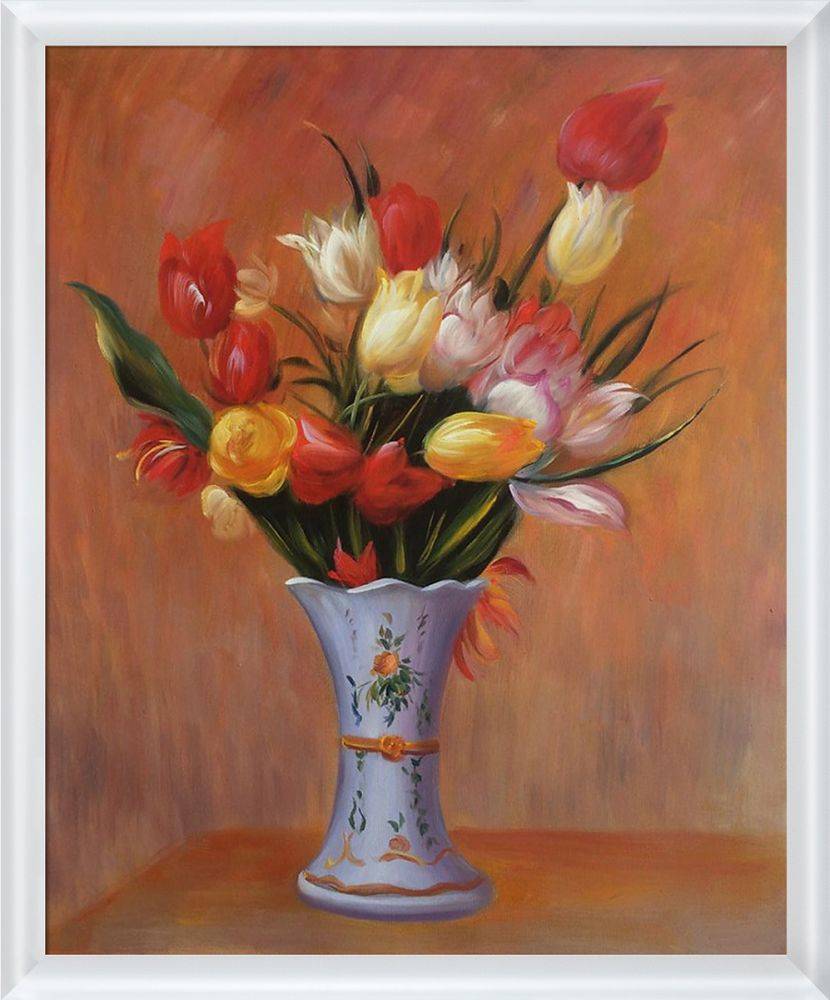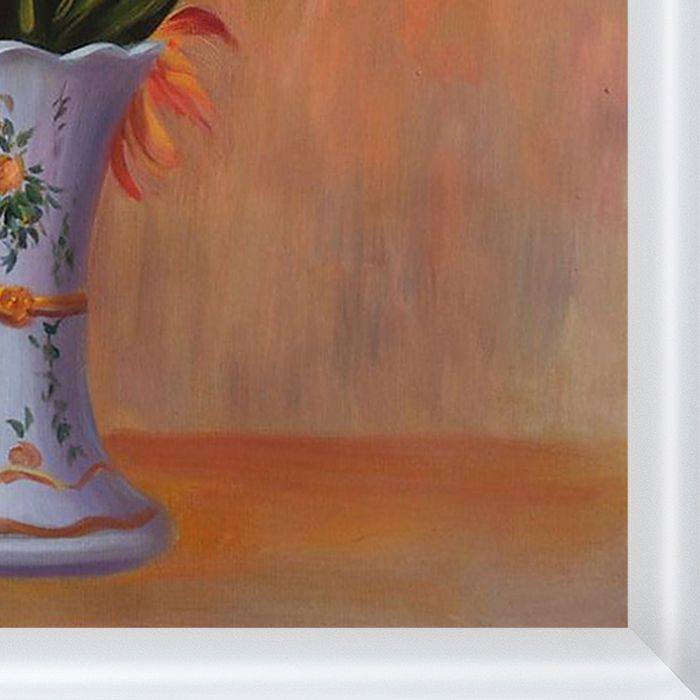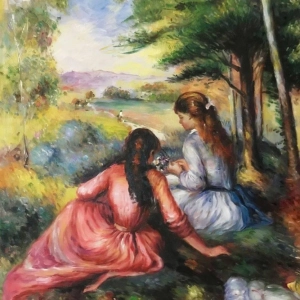Description
Renoir’s Tulips captures the true essence of Impressionistic style where the overall perception of the subject is more important than the realistic value. Renoir’s splendorous painting is a tribute to the Master’s unique ability to translate life onto canvas. Enjoy the beauty of this piece of art in any room of the home. It is sure to hold the attention of those who gaze upon it. Born to a working class family, Pierre-Auguste Renoir began his artistic apprenticeship painting porcelain at age 13. While he would visit the Louvre to study the French masters during his early years, his formal training began with Swiss artist Charles Gleyre. Unlike many of his fellow Impressionists, the official Salon in Paris occasionally accepted his work for exhibition, beginning in 1864 and continuing through 1870, and once again in 1879. During the period in between, he helped to organize the first Impressionist exhibition in 1874, which was a home for those artists rejected by the Salon. It included the paintings of fellow luminaries such as Degas, Cezanne, Pissarro and Renoir’s friend and frequent collaborator, Monet. Because they denied traditional rules of academic art, these artists were rejected in the early days of the Impressionistic movement. Their unique perspective toward style went misunderstood for many years until the public finally agreed that Impressionism was a highly innovative and fresh expression of artistic value and vision. More concerned with the overall perception rather than fine details, Impressionists used color and composition as well as other techniques to develop and nurture this new way of painting. Short, abrupt brushstrokes add depth and texture to the overall composition while blurred lines and an accurate depiction of reflective light were the hallmarks of early Impressionism and remain so today.
Additional information
Additional information
| Size | 16" × 20", 18" × 24", 24" × 36", 30" × 40" |
|---|



















